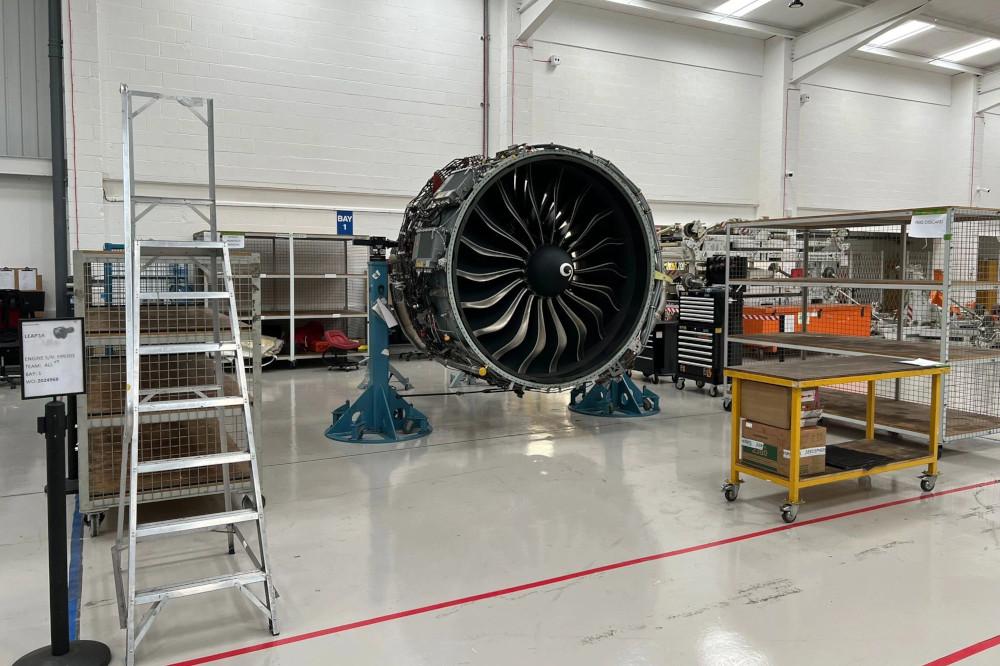
AEC carried out its first RBS retrofit at its new facility close to London Heathrow Airport last month.
LONDON—A UK-based independent engine specialist is looking to tap into maintenance opportunities on narrowbody engines such as the CFM International Leap following its recent move to a new facility close to London Heathrow Airport.
Aero Engine Centre (AEC) moved around 5 mi. from its previous facility at the end of July, but will still operate close to the UK’s largest airport. The 28,000-ft.2 facility can store up to 35-40 engines. Six bays of engine maintenance are planned in the first year of operation with plans to grow this further eventually.
AEC holds approvals on several narrowbody and widebody engine types, including the CFM56 and Leap 1A and 1B, General Electric CF6 and GE90, and International Aero Engines V2500. Since moving to the new site, it plans to pivot more toward narrowbody engine maintenance.
“The new facility will be primarily focused on narrowbody engines, and the Leap market is where we see the biggest opportunity for growth,” AEC founder and Managing Director James Cook tells Aviation Week. He describes AEC’s business model, which typically sees a continuous throughput of engines going through its facility, as giving the company a “steady heartbeat.”
As the Leap matures and the in-service Boeing 737 MAX and Airbus A320neo fleet further increases, AEC inevitably sees higher maintenance volumes and bigger work scopes. Specifically, Cook identifies repair opportunities in areas such as quick engine changes and service bulletins related to Leap engines. In the near term, he expects a lot of work opportunities to be generated by installing a reverse bleed system (RBS) on the 1A variant aimed at improving the engine's durability by reducing coking. Retrofits on in-service Leap 1A engines were authorized by CFM in July.
Upon opening, AEC inducted its first Leap engine, which involved an RBS change on an asset operated by an undisclosed LCC. Cook says over the last three years, the company has readied itself by investing heavily in related tooling due to its customer base being increasingly Leap-focused. “We’ve positioned ourselves with the OEMs to take on more of that Leap activity,” he says.
AEC previously conducted some fuel nozzle replacement work through mobile teams for on-wing Leap engines for some airlines at Heathrow, typically during the A check window. “Hopefully, we will see that level of work increasing, and that’s where we sit below the OEMs because they are concentrating already on Leap quick-turns and don’t necessarily want to do the services that we want to do,” says AEC CFO Hereward Walker. “With demand being so high, we realized that operators and lease companies want a quick turnaround on their product and to get the engine back out on wing,” he adds.
Cook sees AEC still storing engines for OEMs or lessors at its new facility. However, demand for this has naturally plateaued post-COVID. “The utilization on the engines is higher now, so therefore, the storage numbers are low,” Cook says. One area in which the business is looking to grow is support for engine stands and tooling. Cook says AEC is exploring setting up its own independent engine stand and aviation tooling storage facility close to its current location due to demand driven by market challenges related to a scarcity of available tools and stands for certain engine types.





